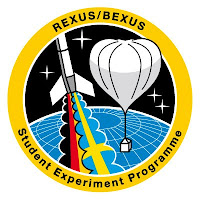Comment on the side: Dutch windows are huge!
Deployment and Stabilisation of a Space Web in Micro-Gravity
Tuesday 30 November 2010
First day Selection Workshop
Comment on the side: Dutch windows are huge!
Monday 29 November 2010
Suaineadh Team arrived in snowy Noordwijk
Thursday 25 November 2010
Suaineadh Experiment Shorlisted for Selection Workshop
 The Suaineadh experiment has been shortlisted for the REXUS 11/12 campaign and will be presented at the Selection Workshop between Tue 30 November and Thur 02 December 2010 at ESA's Space Research and Technology Centre (ESTEC) in Noorwijk, The Netherlands. The four team members that are selected to present Suaineadh are Thomas Sinn (University of Strathclyde, UK), Malcolm McRobb (University of Glasgow, UK), Jerker Skogby (KTH, Sweden) and Adam Wujek (KTH, Sweden).
The Suaineadh experiment has been shortlisted for the REXUS 11/12 campaign and will be presented at the Selection Workshop between Tue 30 November and Thur 02 December 2010 at ESA's Space Research and Technology Centre (ESTEC) in Noorwijk, The Netherlands. The four team members that are selected to present Suaineadh are Thomas Sinn (University of Strathclyde, UK), Malcolm McRobb (University of Glasgow, UK), Jerker Skogby (KTH, Sweden) and Adam Wujek (KTH, Sweden).
Suaineadh Proposal for REXUS 11/12 campaign
Subscribe to:
Posts (Atom)